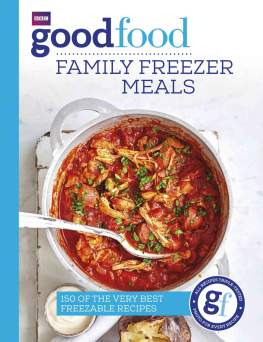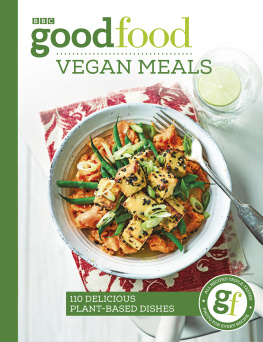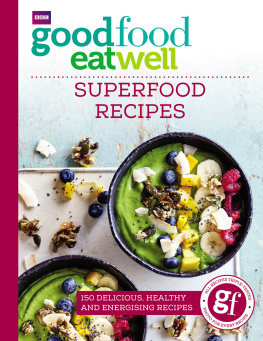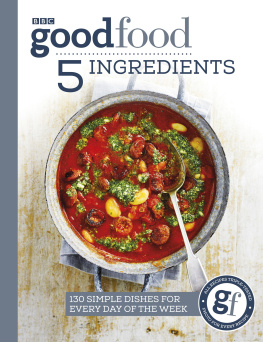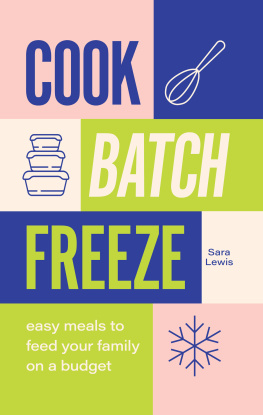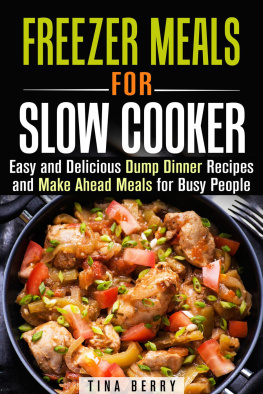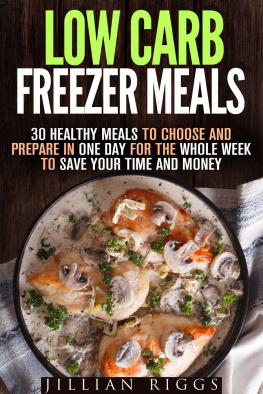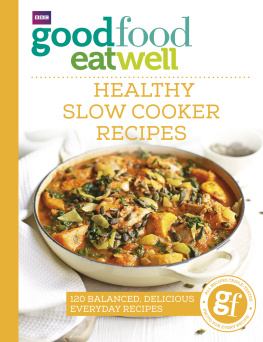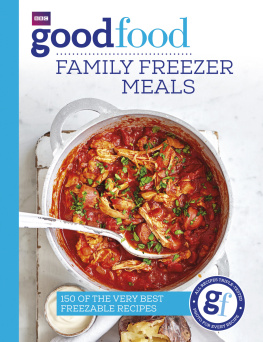Contents
About the Book
Delicious freezable recipes to help you get-ahead with family meals.
Getting a nutritious, tasty meal on the table every night isnt easy, but for those of us with busy lifestyles and little time to spare, using a freezer can be a lifeline.
Whether its batch cooking on a Sunday, or freezing weeknight leftovers, Family Freezer Meals makes dinnertime low-stress and high on flavour. From lasagne and casseroles to veggie shepherds pie and fishcakes, theres something for even the fussiest of eaters.
Accompanied throughout with full-colour photographs and a nutritional breakdown of every recipe, and with advice on defrosting and reheating from the experts at Good Food, mealtimes have never been easier.
About the Author
Each BBC Good Food title is researched and written by the experts at Good Food.
Introduction
The freezer is perhaps the most useful, yet underrated, piece of kitchen equipment that exists. At BBC Good Food, we know how much our readers appreciate being able to get ahead and prepare in advance, which is one reason why we always highlight dishes that freeze particularly well and give tips where appropriate in our magazine and on our website, to help you make the most of our recipes. This book pulls together all of our very best freezable meals, sides and puddings into one handy edition.
For those of us with busy lives, a well-stocked freezer is a welcome help on hectic weeknights. Pulling out a delicious homemade dinner is much quicker than the time it would take to phone for a takeaway not to mention that its often far cheaper.
But freezer food is not just for quick, budget-friendly weeknight dinners weve included recipes for every occasion, including breakfasts and brunches, crowd pleasers, soups and lighter bites, vegetarian and vegan dishes and dinner-party worthy desserts.
All of our recipes are triple-tested in our very own test kitchen to ensure that they work every time for you. Weve also included a full nutritional breakdown for each one, so you can keep track of the calorie, fat and salt content.
With so many delicious dishes at your fingertips, what are you waiting for? Roll up those sleeves, get cooking and stock up that freezer!
Notes & conversions
NOTES ON THE RECIPES
- Eggs are large in the UK and Australia and extra large in America unless stated.
- Wash fresh produce before preparation.
- Recipes contain nutritional analyses for sugars, which means the total sugar content including all natural sugars in the ingredients, unless otherwise stated.
APPROXIMATE LIQUID CONVERSION
OVEN TEMPERATURE CONVERSION
APPROXIMATE WEIGHT CONVERSIONS
Cup measurements, which are used in Australia and America, have not been listed here as they vary from ingredient to ingredient. Kitchen scales should be used to measure dry/solid ingredients.
SPOON MEASURES
Spoon measurements are level unless otherwise specifed.
- 1 teaspoon (tsp) = 5ml
- 1 tablespoon (tbsp) = 15ml
- 1 Australian tablespoon = 20ml (cooks in Australia should measure 3 teaspoons where 1 tablespoon is specifed in a recipe)
Good Food is concerned about sustainable sourcing and animal welfare. Where possible, humanely reared meats, sustainably caught fish (see fishonline.org for further information from the Marine Conservation Society) and free-range chickens and eggs are used when recipes are originally tested.
Advice on freezing & reheating
HOW TO FREEZE
Make the most of your freezer by freezing things properly following our handy hints and tips.
TOP FREEZING TIPS
Whether you have a chest or upright freezer or just a tiny icebox at the top of the fridge, the principles of successful freezing are the same.
- Cool foods properly before you freeze them. Freezing hot or warm food will only increase the temperature of the freezer and could cause other foods around them to start defrosting.
- Only refreeze food if you will cook it thoroughly in between freezes, for example if you defrost mince to make Bolognese and then freeze the finished dish you will have cooked the mince thoroughly.
- A full freezer is more economical to run as the cold air doesnt need to circulate so much, so less power is needed. If you have lots of space free, fill the freezer with everyday items youre bound to use, such as sliced bread or frozen peas and other veg.
- Make sure you wrap foods properly or put them in sealed containers, otherwise your food can get freezer-burn. Food should be wrapped tightly in cling film, if you use freezer bags then squash out any air before sealing them and choose containers that fit their contents with only a little room for expansion.
- Freeze food in realistically sized portions. You dont want to have to defrost a stew big enough to feed eight when youre only feeding a family of three. If in doubt freeze single portions, you can always defrost more than one at once.
- Err on the side of caution if you find an unnamed bag of something in the freezer. Contrary to what many people think, freezing doesnt kill bacteria. If you are unsure of how long something has been frozen or are a bit wary of something once defrosted, dont take any chances.
- Freezing wont improve the quality of your food so dont freeze old food because you dont want to waste it; the point of freezing is to keep food at its prime. If you have leftovers then freeze them straight away.
DEFROSTING
An icy freezer is an inefficient one, so make sure you defrost your freezer if ice builds up. Dont worry about the food; most things will remain frozen in the fridge for a couple of hours while the freezer defrosts.
LABELS
It may seem a bother at the time, but unless you label you might not remember what it is, let alone when it was frozen. Buy a blue marker for raw foods and a red marker for cooked foods. You dont have to write an essay, just label the food clearly. You can use big-lettered abbreviations, for example a big red P means cooked pork or a blue F means raw fish. And always add the date it was frozen.
POWER CUTS
The manufacturers handbook will tell you what the holding time is for your freezer so check it. If there has been a power cut or you think the freezer has been turned off at some point, dont open the door. Generally foods should remain frozen in the freezer for about 24 hours, leaving you time to get to the bottom of the problem.
WHAT NOT TO FREEZE
Most individual ingredients can be frozen, however, some foods simply arent freezer friendly:
Raw eggs in their shells will expand and crack.
Hard-boiled eggs go rubbery. If they are within recipes you may like to remove them before freezing and cook new ones when you reheat your dish.

